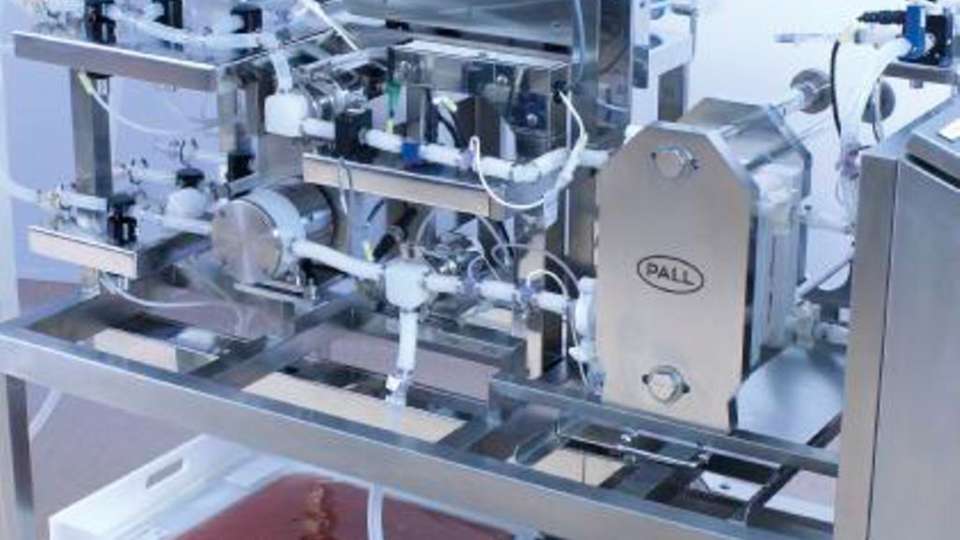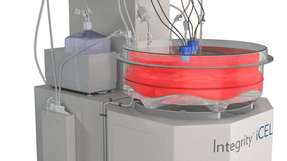A survey by BioPlan Associates in 2009 revealed that over 74 percent of respondents were using single-use TFF in scale-up and clinical production, and 60 percent in commercial production. Reduction or elimination of cleaning has been the major driving force, but the complexity of tangential flow systems presented a major challenge in replacing cleanable systems. For example, the need for high pressures, re-circulating flow paths, pumps, valves, sensors and automation had to be addressed, and the performance shown to be comparable to re-usable systems. To meet these needs, a combination of single-use components and manifolds, interfacing with a re-usable hardware platform, had to be developed. An example of the approach to developing a complex single-use TFF system was recently published by Nicholson and Storm. The authors provide an interesting insight into the way in which issues such as flow dynamics, ease of-use, single-use sensors and automation were tackled. The development strategy focused on three main features: system design, instrumentation and automation and operating capability. The central core of the TFF system was designed to provide a platform on which five single-use manifolds could be attached to form the complete system. The key features and capabilities built into the standard ½ in system design were:
�?� Pressures up to 4.0 bar (60 psig) on the cassette product feed �?� High pressure diaphragm pump with a single-use detachable head �?� Flow rates of up to 1000 L/h �?� Filter membrane area up to 2.5 m² �?� Unrestricted access for ease of use and rapid installation of manifoldsMany factors had to be considered in designing the manifolds. These included careful selection and assessment of construction materials to meet flow and pressure requirements, and to achieve target performance and scalability. Full specification and certification of materials for the tubing sets was also important.
Instrumentation and automation
Single-use instrumentation played a key role in the development programme with a view to offering:
�?� Tracking of key process information �?� Notification when processing is outside specification �?� Automated control of processing under optimum conditions �?� Facilitating fully-automated process sequencesSpecial attention was placed on selection, attachment and connectivity of sensors, assessed in accordance with various criteria: accuracy and repeatability, capital and renewable costs, ease-of-use and impact on system design. The pool of instrumentation that can potentially be used in single-use applications is still relatively small. However, by working with a number of qualified suppliers with approved quality systems, appropriate change control procedures and compliant construction materials, it was possible to install the best possible technology to achieve the target system performance, while ensuring that recurring costs would be acceptable to users. Components that do not require calibration offer improved ease of use and minimise downtime.
Good Engineering Practice
Careful consideration of the layout and installation allows full access to components from one side of the system. The complete system was built in accordance with Good Engineering Practice by a team of experts in systems engineering. The table below shows the sensors and the manufacturers stated accuracy/range (see the more@click link for a more detailed version showing sensor properties and monitor/transmitter). Sensors were selected based on the performance observed by Pall during testing, and if they met the requirements for the application. The system was evaluated using a protein solution and protocol typical of those used in bioprocessing. The results were then compared with the target performance and with results from an equivalent stainless steel system. The following conclusions could be drawn from the results: flux drop-off, volume concentration factors and diafiltration washout curves met the performance targets, confirming effective automated monitoring and control of the process. The diafiltration washout figures also indicated effective mixing in the system. The system facilitated high product recovery (98 percent) as well as a very low hold-up volume. Effective mixing of the retentate was achieved using recirculation, which did not result in any excessive foaming. The system performance was better than or equal to that of the stainless steel system. This type of development allows a single-use approach to be incorporated into applications such as product purification and concentration without compromising product recovery and purity. Further work is now in progress to scale up to 5m² and 10 m² systems for larger batches, and to further enhance the level of automation in terms of improving performance and reducing costs. In addition, a range of TFF capsules is at the advanced stage of development with a view to eliminating product-contact stainless steel holders and further simplifying the system.hall 5.0 booth D34



